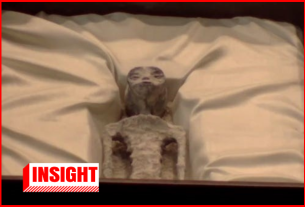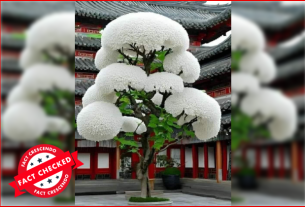Fact Checked by G. Rashmitha Diwyanjalee
A video circulating online highlights the extensive materials used in building a wind turbine, accompanied by a caption that reads, ‘Good luck to any farmer who has to bear the cost of removing these in 20 years’ time. This type of industrial vandalism is not good for the environment.’ The claim suggests that wind farms incur high construction costs, have a large carbon footprint, and are not environmentally friendly. We decided to conduct a fact-check to investigate these assertions.
We decided to do a search on this.
How Do Wind Turbines Work?
Wind turbines function by harnessing the wind to produce electricity, rather than using electricity to create wind like a fan. When wind blows, it turns the blades of the turbine, which spin a rotor connected to a generator, generating electricity.
Wind is generated due to three main factors:
- Uneven heating of the atmosphere by the sun
- Variations in the earth’s surface
- The earth’s rotation
Types of Wind Turbines
Wind turbines come in two main types: horizontal-axis and vertical-axis.
- Horizontal-axis wind turbines: These are the most common and typically have three blades that face into the wind, pivoting at the top of the tower.
- Vertical-axis wind turbines: These include designs like the Darrieus model and are omnidirectional, meaning they do not need to be pointed into the wind.
Wind turbines can be installed on land or offshore in oceans and lakes. The U.S. Office of Energy Efficiency & Renewable Energy is supporting projects to enhance offshore wind deployment. Each wind turbine consists of up to 8,000 different components. The related article can be reached here.
Claim 1: Is the Construction of Wind Turbines Costly?
Yes, the construction of wind turbines can be costly. George Duval, a researcher in sustainability and environmental studies, stated to Todays Homeowner that wind turbines are very expensive initially. The cost is influenced by the price of raw materials like steel and copper, which can fluctuate, as well as labor costs, material availability, taxes, government incentives, and tariffs.
Michael Thompson , writing for Sigma Earth, highlighted that commercial wind turbines have high initial costs, typically ranging from $1.3 million to $2.2 million per MW. However, these costs can be mitigated through economies of scale and technological advancements. Operational and maintenance expenses account for 20-30% of overall lifespan costs. Additionally, selecting turbine sites with optimal wind conditions and proximity to infrastructure, along with government incentives and advancements in technology, further enhance cost-effectiveness. Despite the high initial investment, wind energy’s long-term financial and environmental benefits position it as a sustainable and economically viable energy alternative.
Claim 2: Do Wind Farmers Need to Bear the Cost of Removing Parts After 20 Years?
Wind turbines are built to last 20-25 years. When they reach the end of their operational life, wind farmers face significant challenges regarding what to do with the turbine blades, which are made from materials like fiberglass and epoxy resin that are difficult and expensive to recycle. Most of these blades end up in landfills or are incinerated, posing environmental challenges” said Claire Barlow, a sustainability and materials engineer at Cambridge University to CNN. The related article can be reached here.
While about 90% of turbine components are recyclable, the blades are not. They are made from durable materials like fiberglass bound with epoxy resin, making them extremely difficult and costly to break down. Current recycling options are wasteful and environmentally harmful, such as incineration, which causes pollution, or landfilling, which is not entirely benign.” said Claire Barlow.
Wind turbine blades awaiting burial at the Casper Regional Landfill in Casper, Wyoming. Pic courtesy: Benjamin Rasmussen/Getty Images
“Efforts are being made to find better solutions. For example, Vestas, a Danish wind company, announced a breakthrough chemical technology in February that could potentially recycle turbine blades without changing their design or materials. However, scaling up such technologies remains a challenge”, said Lisa Ekstrand, the head of sustainability at Vestas, expressed excitement about this potential solution.
WindEurope, an industry association, has been working on creating a circular economy for wind turbines. They have developed a Guidance Document for the dismantling and decommissioning of onshore turbines, which includes best practices for recycling and disposal. However, the financial burden of these processes often falls on wind farmers, as there is currently no international standard for sustainable decommissioning and dismantling. WindEurope CEO, Giles Dickson emphasized the need for international standards and sustainable practices in a seminar (EoLIS 2020) and reported by BBC. The related article can be reached here.
Projections of blade waste reaching 2.2 million tons in the US and 43 million tons globally by 2050 were highlighted by CNN, indicating the significant environmental and financial burdens of managing end-of-life turbine blades.
Vestas’ new technology entails separating glass or carbon fibers from epoxy resin in turbine blades. Following this, chemicals break down the resin into base materials that mimic virgin quality. These reclaimed materials are suitable for reuse in manufacturing new turbine blades or other applications. Allan Poulsen, Vestas’ head of sustainability and advanced materials, emphasized the innovation’s potential for advancing sustainable practices in the wind energy sector. The related article can be reached here.
Claim 3: Are Wind Turbines Environmentally Friendly?
Wind energy significantly reduces greenhouse gas emissions compared to fossil fuels. David Keith, the Gordon McKay Professor of Applied Physics at Harvard University, stated, “Wind beats coal by any environmental measure”
Wind energy plays a vital role in helping countries move away from fossil fuel energy, which pumps out planet-heating pollution. The related article can be reached here.
Research by Harvard University found that transitioning to wind power in the U.S. would require five to 20 times more land than previously thought, potentially warming average surface temperatures over the continental U.S. by 0.24 degrees Celsius. The related article can be reached here.
Keith and postdoctoral fellow Lee Miller quantified the power density of wind farms and discovered that interactions between turbines and the atmosphere significantly affect power density and climate impact. “The direct climate impacts of wind power are instant, while the benefits of reduced emissions accumulate slowly”. The related research paper can be reached here. The study by Miller and Keith indicated that wind farms could locally warm the surface temperature of the continental U.S. by up to 1.5 degrees Celsius at night. These warming results from wind turbines mixing the atmosphere near the ground and aloft while extracting energy from atmospheric motion, Leah Burrows reported to the Harvard Gazette. The related article can be reached here.
For the first century of wind farm operation, the warming effect might be larger than the cooling effect from reduced emissions. However, over a more extended period, wind power has a substantially lower climatic impact than coal or gas. The related article can be reached here.
Wind turbine blades are challenging and costly to recycle due to their construction from fiberglass bound with epoxy resin. Most blades end their lives in landfills or are incinerated, which poses environmental challenges. The related article can be reached here.
However, Experts propose various wind-blade recycling techniques, including microwave pyrolysis for large-scale recycling, mechanical recycling for smaller blades, fluidized bed recycling for lower energy consumption and environmental impact, and cement co-processing to reduce CO2 emissions and integrate blade materials into cement. Vestas has introduced an innovative chemical technology to break down epoxy resin in turbine blades into reusable materials, enabling a circular economy in the wind industry without redesigning the blades. The related article can be reached here.
Therefore, the video and caption highlight concerns about the environmental and financial impacts of wind turbines, specifically citing high construction costs, a significant carbon footprint, and long-term disposal issues. This fact-check investigates these claims by examining the workings of wind turbines, their costs, their environmental benefits, and the challenges associated with decommissioning and recycling. Overall, while wind turbines involve substantial initial investments and present recycling challenges, they offer considerable long-term environmental benefits and technological advancements are ongoing to address disposal issues, reinforcing their role as a sustainable energy solution.
Follow us and stay up to date with our latest fact checks.
Facebook | Twitter | Instagram | Google News | TikTok

Title:Assessing the Environmental and Economic Impacts of Wind Turbines
Written By: Rashmitha DiwanjaleeResult: Insight






